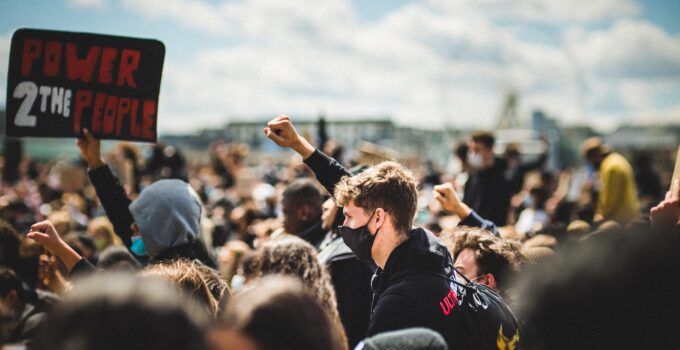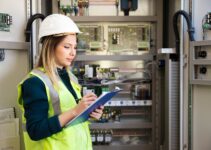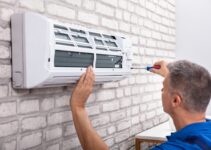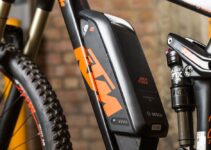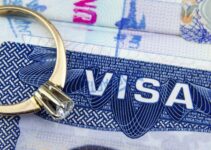Protests and marches will continue to play a significant role in American history. From the Boston Tea Party in 1773 to the George Floyd protests in 2020, Americans have always been ready to stand. The most notable protests over the years, have drawn larger crowds than ever before.
Attendees are counted into the millions at protests in the last few years. For instance, according to an article in the Atlantic, about 4.6 million people combined attended the 2017 Women’s March in the U.S. In D.C. alone, there were between 470,000 to 680,000 people marching at once (Waddell, Kaveh). To say the least, this is a lot of people to keep safe and contained.
Consequently, organizers and public safety officials at these events need proper communication tools to ensure everything runs smoothly. With the overturn of Roe V. Wade, more protests are expected across the country. Therefore, responders should have their communications technology prepared.
The best gadgets to have in these situations are two-way radios, headsets, and C.O.W.s or D.A.S in place. Each of these types of technology can lead to clear and uninterrupted communications between public safety officials like police officers, firefighters, EMTs, and more.
They are also beneficial to the protestors’ safety because with this technology—specifically the C.O.W.s and D.A.S.—they too can communicate between each other. Continue reading this article to learn more about the benefits of these communications tools and why they are useful during a protest.
Two-Way Radios:

Source: motorolasolutions.com
For decades, two-way radios have been the most reliable source of communication. In situations like protests where the quality of communication is at risk, two-way radios are the best option. Because cell towers can become overloaded when there are large crowds, two-way radios are the solution; for, this technology operates separately from cell phone towers.
Radios also offer unique features to communication that one may not think of originally. For instance, most modern two-way radios feature built-in GPS. This is a great feature for any user at a protest.
Protests can be held anywhere but are most often in cities. In large marches, it can be challenging to see street signs to determine your location. Therefore, the GPS is useful because you can connect with your team by sending them your GPS coordinates. This tool is useful to both organizers and public safety.
Two-way radios also feature higher durability rates compared to the average modern cell phone. These radios are purposefully manufactured to endure harsh conditions like rain, humidity, drops from high heights, and cold or hot temperatures. Most protests are held outside at anytime of the year. Those attending cannot risk their lines of communication failing simply because of the rain or any other uncontrollable elements.
Two-way radios are a great place to start when preparing your communications technology in the event of protests and other large gatherings.
Headsets:

Source: securityintelligence.com
Communication headsets are a great resource. Protests tend to be noisy evens making normal communication over two-way radios challenging. Headsets are made to allow for clear communication in the nosiest and most challenging environments. Most of the headsets come with special earmuffs or ear buds and microphones.
The earmuffs or ear buds are optimal because they come with situational awareness. This term means the headset will block out unnecessary loud noises to protect the user’s hearing and clear communication. At the same time, it will let in important sounds like talking.
Headset microphones are great because they are equipped with environmental listening. Similar to situational awareness, environmental listening means the microphone will only transmit your communications and cancel out any other unnecessary noise.
Headsets provide the opportunity for clear and uninterrupted communication even in the loudest environments. To learn more about different headsets offered at First Source Wireless, click here.
C.O.W.s and D.A.S.:

Source: unsplash.com
At events like protests, concerts, and football games, there are many people in one area. When this happens, cell phone service can be unreliable. The lack of service happens because there are too many phones overloading the local cell phone towers. Technology like C.O.W.s and D.A.S. are useful is this situation.
A C.O.W. or cell on wheels is essentially a mini portable cell phone tower. They range from a small unit that can be towed by a pickup truck to units that need a scissor lift to operate. C.O.W.s are often used as temporary solutions, so they are optimal for events like concerts and fairs.
When looking for a more permanent solution, D.A.S. or distributed antenna systems may be the answer. D.A.S. can be installed inside or outside any structure. They are most useful in places like hospitals, college campuses, stadiums, city centers, and other places where large crowds convene.
D.A.S. is a series of strategically placed antennas inside or outside structures. The antennas work together to improve any cellular signal spots that are low or nonexistent. However, distributed antenna systems do work on a dedicated capacity. Therefore, they only provide signal to those who are allotted to the connection. If the system is setup to only support 1,000 devices, then it will mark 1,000 as the capacity.
C.O.W.s or D.A.S. are great options to keep everyone safe during protests. Not only will they allow protestors to communicate with loved ones and those they came with in the event of an emergency, but public safety officials will also have an easier time communicating. As always, in the prevention of or response to an emergency, the more communication, the better the outcome.
America is a country rooted in the ability to protest. Many significant changes to our government happened after moving protests; however, it is imperative that those attending stay safe. Whether it is the people marching or the officials working to keep the peace, they all deserve to stay safe.
With large gatherings of people, communication can become jumbled and inconsistent, but when the right technology is put to work these issues become resolved. Two-way radios, communications headsets, and C.O.W.s/D.A.S. are some of the best options to ensure all attendees can communicate properly.
The more communication at protests, the higher the probability of all those who are in attendance staying safety.

